The engineering design process (EDP) is like the secret recipe used by engineers all over the globe to tackle brain-busters and come up with some seriously cool solutions. Nowadays in schools, especially for those brainy STEM subjects, it’s the new rock star, helping to shape our future Einsteins and Elon Musks. This guide to teaching the engineering design process is like a superhero trio of science smarts, math magic, and creative genius, teaming up to kick problem-solving into high gear. Ready to get started? Let’s go!
What is engineering?
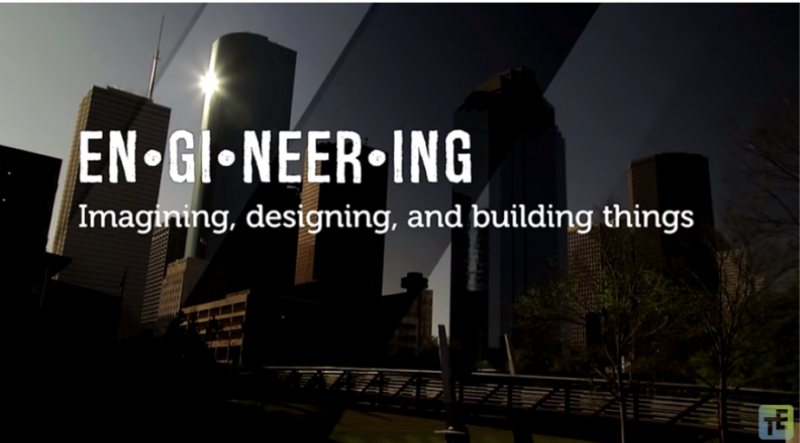
Teach Engineering/definition via teachengineering.org
Let’s break down what “engineering” really is. You might picture engineers as a group of folks who share a knack for building, designing, and problem-solving. But it’s more than just that. It’s about shared practices and ways of thinking that are deeply ingrained in us. And guess what? Not all engineers think or work the same way, even if they’re in the same field. It’s all about where they studied, how they were trained, and their unique experiences.
Now, here’s the thing: We often don’t realize how our engineering approach differs from others until we bump into those who do things differently. It can feel a bit weird stepping outside our comfort zone. And while it’s awesome to learn from different approaches, it’s also crucial to respect and value our own. After all, there’s no one-size-fits-all in engineering!
Why teach engineering?
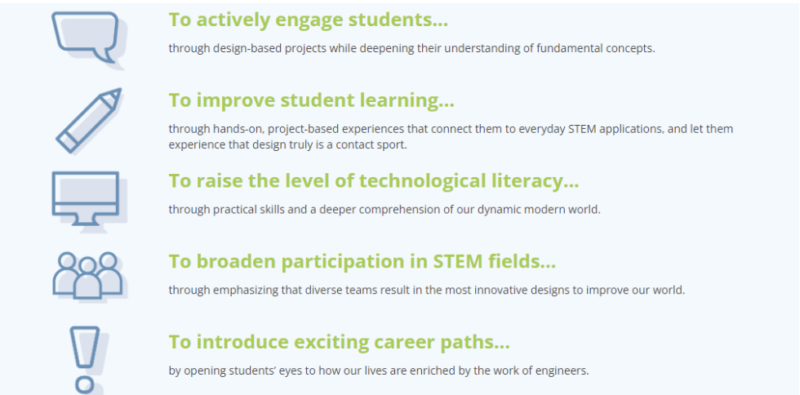
Teach Engineering/why teach engineering via teachengineering.org
Introducing engineering in K-12 education is a pathway to unlocking endless possibilities for our young learners. As the late Joseph Bordogna, former deputy director of the National Science Foundation, eloquently put it, “Scientists investigate what is; they discover new knowledge in the universe by peering into the unknown. Engineers design and create what has never existed before.”
By teaching engineering, we’re not just imparting technical skills, we’re fostering a mindset of innovation and creativity. We’re empowering students to become more than just consumers of technology. We’re shaping them to be the inventors and problem-solvers of tomorrow, capable of designing and creating what has never existed before.
The engineering design process defined
The engineering design process is like a roadmap that engineers use to tackle problems and come up with cool solutions. It’s a series of steps that help them create stuff that works well and won’t break the bank. The best part? It’s not a one-and-done deal. The EDP is all about brainstorming, getting feedback, and tweaking things until they’re just right. So, it’s a continuous ride on the innovation roller coaster where great ideas meet some serious trial-and-error in the quest for the perfect solution.
Steps of the engineering design process
Let’s break down the EDP into six easy steps:
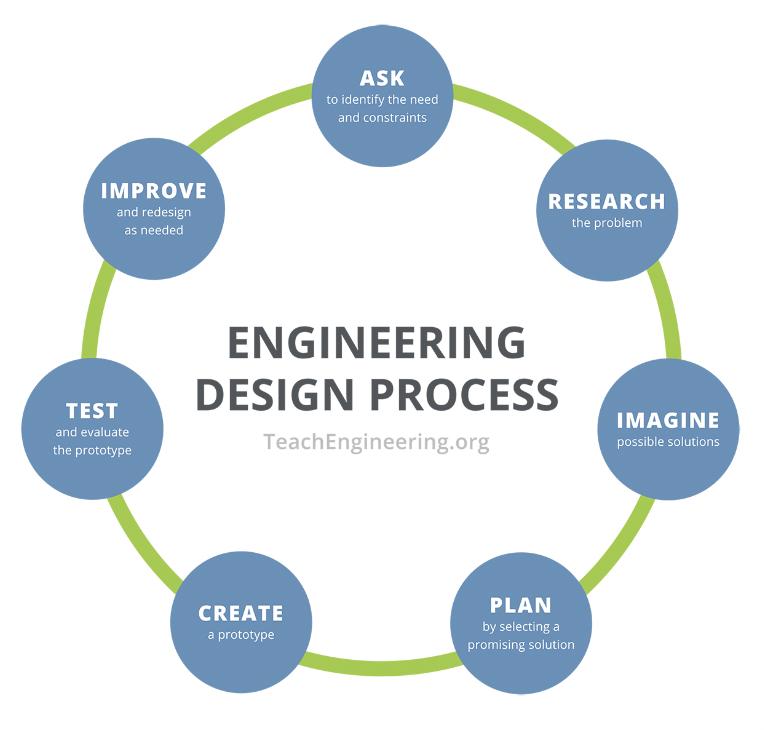
Teach Engineering/EDP steps via teachengineering.org
1. Ask: “What’s the problem?”
Picture yourself as a detective. You’ve got to figure out what’s going wrong, why it’s happening, and what we’d like to happen instead.
2. Research: Homework time
Now, you need to roll up your sleeves and do some research. Gather all the facts and figures about the problem. It’s like doing a deep dive into the problem’s life story.
3. Imagine: Brainstorm bonanza
With all that info in your brain, start cooking up some solutions. Go wild! No idea is too crazy at this stage.
4. Plan: Pick your champion
Now, look at all those brilliant ideas and pick the best one. Think about what’s doable, what’s cost-effective, and what will be super-efficient.
5. Create: Prototype party
Time to bring your chosen solution to life! Build a prototype and put it through its paces to see if it’s up to scratch.
6. Test and improve: Make it better
Finally, don’t rest on your laurels. Use any feedback you get to tweak and improve your design until it’s the best it can be.
There you have it! The EDP in a nutshell. Not as daunting as it sounds, right?
If you’re looking for some printable posters or student handouts for the steps of the EDP, check out these posters from Teach Engineering!
How to teach the engineering design process
Teaching the EDP is like giving students a superpower for tackling problems and thinking critically. It’s all about getting their hands dirty with projects, diving into STEM activities, and taking on real-world engineering challenges—think building bridges or planning a rocket launch (NASA, we’re coming for you!).
You can make learning interactive and fun by using cool tech tools like interactive whiteboards and 3D modeling software. Why not spice things up with videos and podcasts too? They’re great for breaking down complex concepts.
And don’t forget about those epic engineering design challenges. They’re a fantastic way to introduce students to the EDP and get them excited about problem-solving.
But hey, you’re not alone in this. The internet is bursting with resources to help you rock the EDP teaching game. From free STEM lessons to engaging activities and handy instructional videos, it’s all just a click away.
Lessons and Activity Ideas
1. Picture books
Sarah McClelland from Little Bins for Little Hands has curated a fantastic collection of the top 14 Engineering Books for Kids. And here’s a pro tip: If you’re planning to incorporate these books into your classroom activities, why not bring in some guest readers via YouTube to share these picture books with your students? For an out-of-this-world experience, check out Story Time From Space, where astronauts aboard the International Space Station read books like Rosie Revere, Engineer! It’s a stellar way to inspire young minds and introduce them to the fascinating world of engineering.
2. STEM curriculum by Teach Engineering
Feeling overwhelmed about incorporating the Engineering Design Process (EDP) into your classroom? No worries! The University of Colorado–Boulder’s Engineering Department and the National Science Foundation have developed a free, comprehensive K-12 Curriculum Database. Regardless of grade level, time limitations, or EDP familiarity, you’ll find complete lessons with videos, handouts, and more. Plus, its user-friendly search feature makes it easy to find suitable lessons, maker challenges, and units from its extensive library in no time!
3. PBS Design Squad
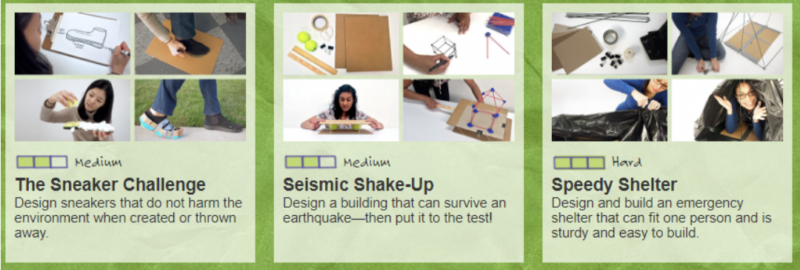
PBS Kids /Design Squad via PBSkids.org
Offer kid-friendly challenges that encourage independent learning and creativity with PBS Design Squad. A unique feature they provide is a “stuff spinner,” where children can enter the materials they have available, and the tool will suggest a project tailored to their interests. This interactive approach enables kids to apply the engineering design process using everyday items, fostering their problem-solving skills and ingenuity.
They also feature an engaging TV series aimed at inspiring young engineers. In each episode, two teams go head-to-head, putting their design skills to the test to create the most innovative solutions. It’s a thrilling way to motivate students in their engineering endeavors!
4. Secondary Engineering Design Process Worksheet
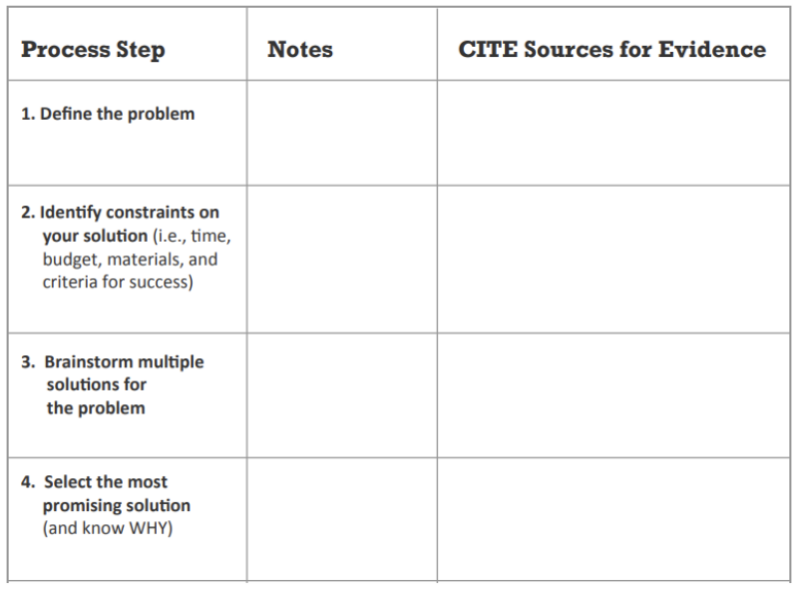
Edutopia /Engineering Design Process Worksheet via Edutopia.org
Edutopia provides a comprehensive, step-by-step graphic organizer ideal for secondary teachers introducing the EDP to their students. The beauty of this organizer is its versatility; it can be seamlessly integrated into any EDP activity!
5. Career connections
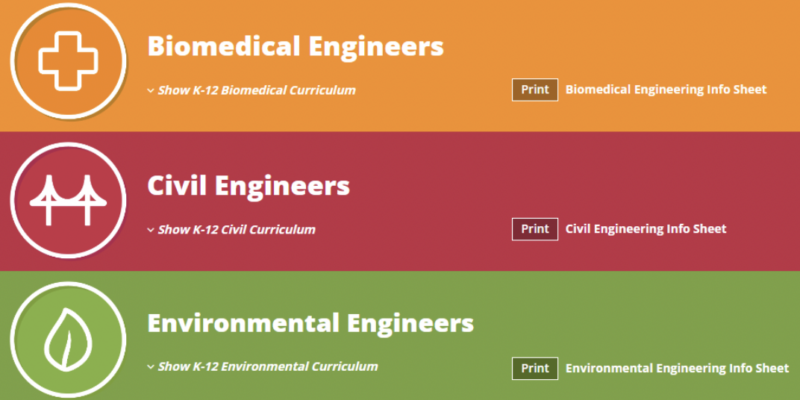
Teach Engineering /Types of Engineering for Kids’ Exploration via teachengineering.org
Career connections from Teach Engineering are an engaging and low-risk way to show students how the engineering design process works in real-life engineering jobs. They come with handy cheat sheets for each grade level, making it easy for students to see how EDP fits into different careers. Plus, there are curriculum links and YouTube videos for every grade level to make learning about this stuff more fun and engaging!
Looking for more STEM-spiration? Try these 50 STEM Activities To Help Kids Think Outside the Box!
And for more articles like this, be sure to sign up for our free newsletters to find out when they’re posted!

